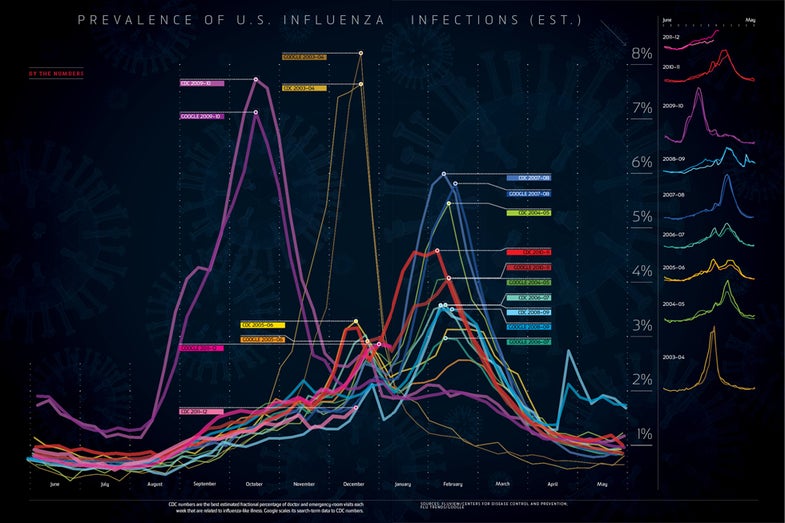By the Numbers: Flu Season, Visualized
Strains of seasonal influenza behave slightly differently season to season and strain to strain. The differences are revealing. The rate...

Strains of seasonal influenza behave slightly differently season to season and strain to strain. The differences are revealing. The rate of transmission of the 1918 pandemic, which killed 40 million people, closely mirrors the data from the 2009 H1N1 pandemic. The two strains are, in fact, closely related. At the Centers for Disease Control and Prevention (CDC), epidemiologists study the patterns of flu data from the current season against historic data. The comparison helps them make informed decisions about how to respond to the virus: what kind of vaccine to make, how to make it, and how and where to distribute it. As data sets improve, scientists will be able to better predict how future strains of seasonal influenza will spread.
See the infographic in full here.